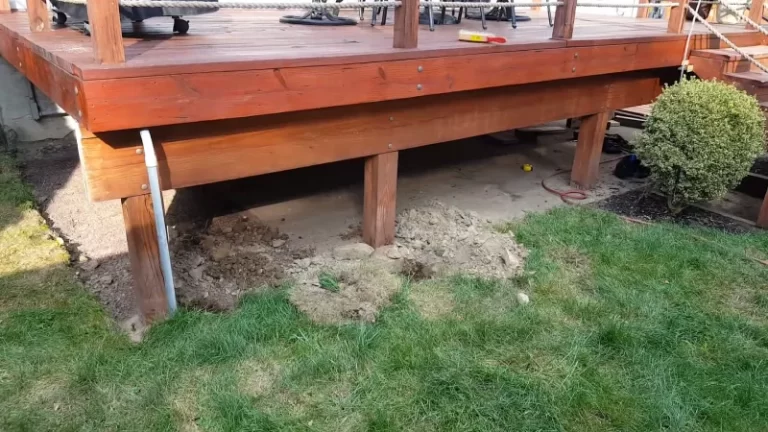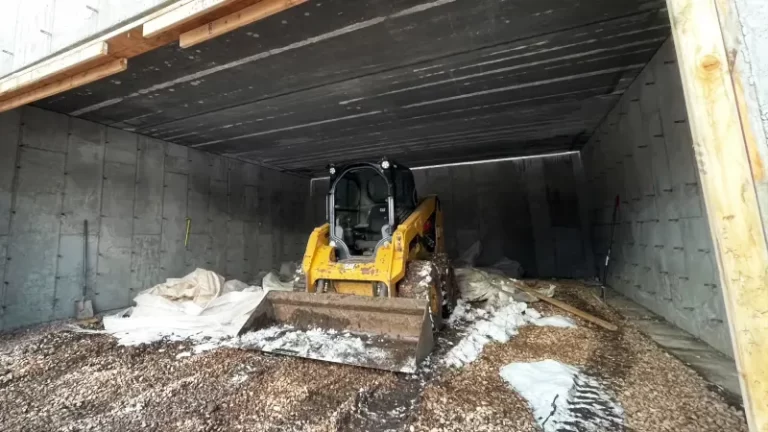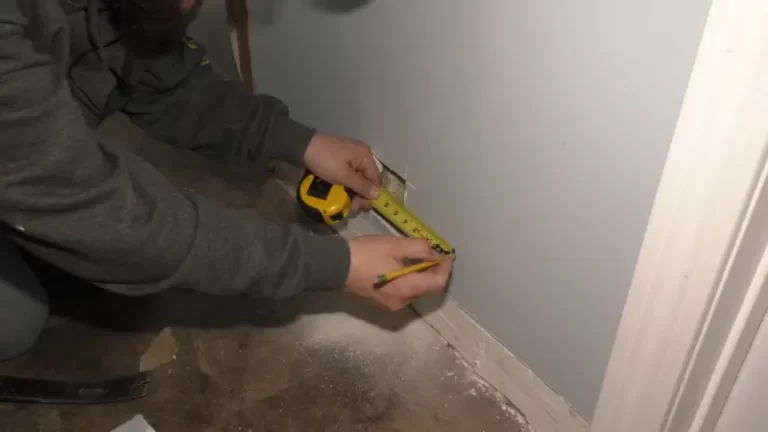Underpin A Crawl Space Wall For A Small Addition

Underpinning is a construction process that involves adding additional support to the foundation of a building in order to stabilize it and prevent further movement or subsidence. This process is necessary when the existing foundation is not strong enough to support the weight of the building, or when the soil beneath the foundation is not stable enough to provide adequate support.
There are several different methods of underpinning, including concrete underpinning, steel screw-in piers, and helical piers, and the method chosen will depend on the specific needs and conditions of the building. In this article, we will focus on the process of underpinning crawl spaces.
You'll Learn About
Why Underpin A Crawl Space?
There are several signs that a crawl space may need underpinning. Some common indicators that the foundation is not adequately supporting the building include:
- Cracks in the foundation or walls
- Sagging or uneven floors
- Doors or windows that are difficult to open or close
- Wall or ceiling cracks that are getting bigger over time
- Gaps around doors or windows
If these issues are not addressed, they can lead to more serious problems, such as further foundation movement, structural damage, and even the risk of the building collapsing. Failing to address foundation issues can also decrease the value of the property and make it more difficult to sell.
Underpinning the crawl space can help to stabilize the foundation and prevent these issues from occurring. The minimum size of a crawl space according to the IRC (International Residential Code) is 16 inches high and 24 inches wide for the entrance.
Yes, crawl space encapsulation can be used to cover the opening of a crawl space. A crawl space can be filled in, but it is not a common practice and it would depend on the specific circumstances and building codes in the area. It’s recommended to consult with a professional before doing so.
Types Of Underpinning For Crawl Spaces
There are several types of underpinning that can be used to stabilize the foundation of a crawl space. Some common options include:
Concrete Underpinning
This involves excavating the soil around the foundation and constructing new concrete footings or piers beneath it. The new footings are typically spaced at regular intervals around the perimeter of the foundation and go down to a depth where they can be founded on soil that is strong enough to support the weight of the building.
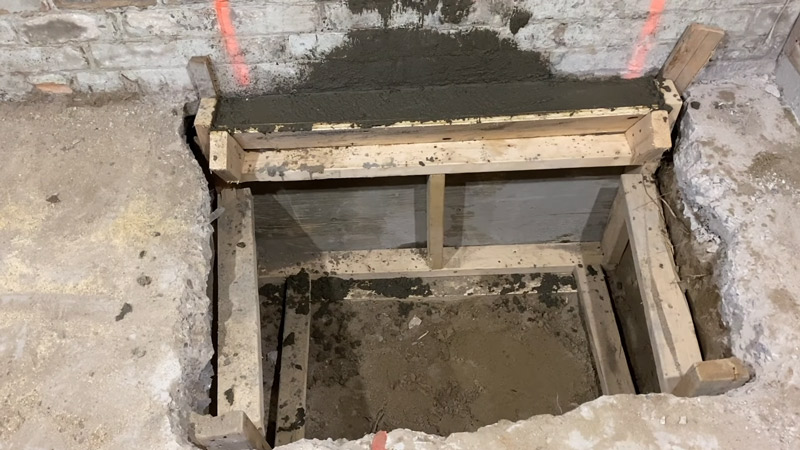
Concrete underpinning is a relatively slow and expensive process, but it is very effective for stabilizing foundations.
Steel Screw-In Piers
These piers are installed by screwing them into the ground using a hydraulic torque motor. They are designed to reach deep, stable soil layers and provide support for the foundation. Steel screw-in piers are a faster and more cost-effective option than concrete underpinning, but they may not be suitable for all soil types.
Helical Piers
These are similar to steel screw-in piers, but they have a helical shape that allows them to be screwed into the ground more easily. Helical piers are a good choice for crawl spaces with limited access or where excavation is not possible.
In general, concrete underpinning is the most effective option for stabilizing foundations, but it is also the most expensive and time-consuming. Steel screw-in piers and helical piers are faster and more cost-effective, but they may not provide as much support as the concrete underpinning in some cases. The best option will depend on the specific needs and conditions of the crawl space.
The Underpinning Process For Crawl Spaces
The process of underpinning a crawl space typically involves the following steps:
Assessing The Foundation
The first step in the underpinning process is to assess the foundation and determine the extent and cause of any foundation problems. This may involve a visual inspection, as well as soil tests and other specialized tests.
Selecting The Underpinning Method
Based on the findings of the assessment, a suitable underpinning method can be selected. This may involve consultation with a structural engineer or other professionals.
Excavating the soil
In most cases, it will be necessary to excavate the soil around the foundation in order to access the existing footings and construct the new support structures.
Constructing The New Footings Or Piers
Once the soil has been excavated, the next step is to construct the new footings or piers. This may involve pouring concrete, installing steel screw-in piers, or screwing in helical piers.
Installing Temporary Support
In some cases, it may be necessary to install temporary support to prevent further movement of the foundation during the underpinning process. This may involve installing jacks or other temporary support structures.
Backfilling and grading
Once the underpinning is complete, the soil around the foundation can be backfilled and graded to ensure proper drainage.
There are several special considerations to keep in mind when underpinning a crawl space. For example, it may be necessary to work in a confined space, which can make the process more challenging. It may also be necessary to take precautions to prevent damage to the building or to other structures, such as utilities, during the underpinning process.
Finally, it is important to ensure that the new footings or piers are properly aligned and that they provide adequate support to the foundation.
Maintenance And Ongoing Care Of Underpinned Crawl Spaces
After the foundation of a crawl space has been underpinned, it is important to take steps to maintain the stability of the foundation and to prevent further issues from arising. Some tips for maintaining an underpinned crawl space include:
Keep The Crawl Space Dry
Water can be a major cause of foundation problems, so it is important to keep the crawl space as dry as possible. This may involve installing a sump pump, sealing the foundation, or taking other measures to prevent water from entering the crawl space.
Monitor The Foundation
Regular inspections of the foundation can help to identify any potential issues early on, before they become serious problems. It is a good idea to have the foundation inspected at least once a year, or more frequently if you have noticed any signs of foundation problems.
Address Any Issues Promptly
If you do notice any issues with the foundation, it is important to address them promptly. Ignoring foundation problems can lead to more serious issues in the long run, so it is best to take care of them as soon as possible.
Maintain Proper Grading And Drainage
Proper grading and drainage can help to prevent water from accumulating around the foundation, which can cause foundation problems. Be sure to maintain proper grading and drainage around the crawl space to help prevent issues.
Repair Any Cracks Or Other Damage
If you notice any cracks or other damage to the foundation, it is important to repair them as soon as possible. Small cracks can quickly become bigger problems if they are not addressed, so it is best to fix them as soon as you notice them.
Underpinning Crawl Space
Underpinning is a process used to repair or stabilize the foundation of a building. It involves adding additional support to the foundation by constructing new footings or piers beneath the existing foundation, or by reinforcing the existing foundation with additional materials.
The purpose of underpinning is to provide a stable base for the building and to prevent further movement or subsidence.
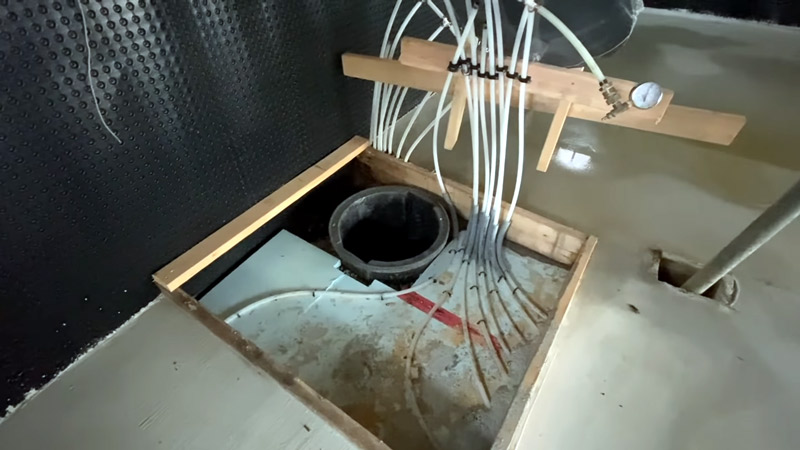
There are several methods of underpinning, including concrete underpinning, steel screw-in piers, and helical piers. The method used will depend on the specific needs and conditions of the building, as well as the soil conditions and the level of foundation movement.
To undertake to underpin, the first step is to assess the extent and cause of the foundation problems. This may involve a visual inspection, as well as soil tests and other specialized tests. Based on the findings of the assessment, a suitable underpinning method can be selected and a plan developed.
Once the plan is in place, the work can begin. This may involve excavation to expose the foundation and the construction of the new footings or piers. In some cases, it may be necessary to temporarily support the building during the underpinning process to prevent further movement. You can easily install light fixtures without ground wires here.
If you are considering adding an addition to your house and are unsure about the stability of the foundation, it is important to have the foundation inspected by a professional before proceeding with any construction work. They will be able to advise you on the best course of action and help ensure that the addition is built on a stable foundation.
Conclusion
In conclusion, underpinning is an important process that can help to stabilize the foundation of a crawl space and prevent further movement or subsidence. There are several different methods of underpinning, and the best option will depend on the specific needs and conditions of the crawl space.
If you suspect that your crawl space may have foundation issues, it is important to seek professional help as soon as possible. A structural engineer or other foundation repair specialist can assess the condition of the foundation and recommend the most appropriate course of action.
By taking steps to address foundation issues, you can help to ensure the stability and safety of your crawl space and protect the value of your property.

